Are you someone who feels curious about a dog’s behaviour then you are in luck. Today we are going to explore how can you turn your curiosity into a career. Join us as we explore “How to Become a Dog Behaviourist?”
In this blog, we are going to understand what dog behaviourists do. How they analyze different things about dogs and manage their behaviours, so without any further ado let’s begin…
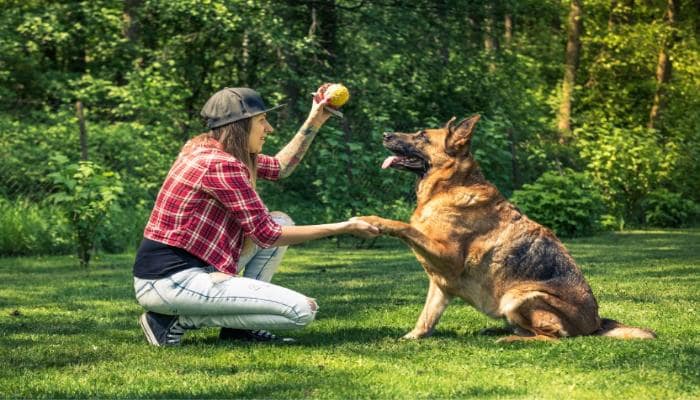
How to Become a Dog Behaviourist?
Dogs are curious animals, each with its own personality and quirks. Sometimes they display behaviours that are confusing and challenging for both and its owner.
This is where a dog behaviourist comes in – they are like superheroes of the dog world, helping to decode and improve the behaviour of the dog. It’s a career that goes beyond training, it’s about fostering a positive and pleasant relationship between humans and dogs.
Why Dog Behaviorists Are Important?
- Dogs express themselves through body language, barks, and actions. Sometimes, though, we may not fully understand what they’re trying to tell us. In this situation, a behaviourist helps us comprehend our dogs better and respond suitably.
- Dogs, like humans, can face challenges. They may become nervous, aggressive, or overly shy, making it difficult for them to enjoy a happy, healthy life. Now, let’s explore the 7 steps of becoming a dog behaviourist:
1. Educational Requirements
Gaining a detailed understanding of dog’s behaviour and psychology begins with studying biology in high school to learn the physical functions of dogs.
However, fully learning the complexities of how dogs act also necessitates learning about the mental thought patterns that shape their actions. Building communication skills is additionally key for positive engagements with dogs and their human caretakers.
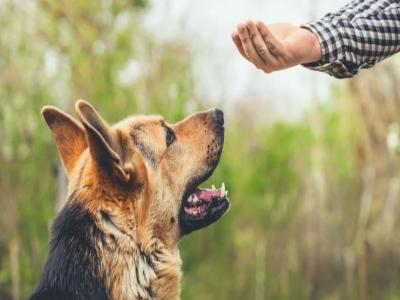
For example, carefully watching dog breeds respond in ordinary, day-to-day settings provides initial perceptions of their typical reactions and conduct.
After high school, pursuing an undergraduate degree in Animal Science permits a more refined exploration of the scientific research on animal behaviour and psychological states.
This advanced academic knowledge equips the skillset to interpret the reasons behind a dog’s actions and modify problematic dog behaviours when suitable. For instance, scientific studies exhibit noticeable conflicts in social structures between breeds that inform hierarchical conflicts.
2. Gain Practical Experience
Volunteering at animal shelters furnishes hands-on experience interacting with a wide span of canine breeds and backgrounds. In this environment, volunteers become exposed to diverse dog behaviours, from high-energy puppies to withdrawn, timid adult dogs based on upbringing.
- This first-hand involvement allows volunteers to refine practical handling approaches, and training tactics, and conduct modification under authentic conditions alongside educated shelter personnel.
- For instance, volunteers may learn proper leash walking of rowdy dogs or adoption-boosting reward systems indicative of the real-world skills developed. Internship opportunities working alongside certified dog behaviourists also proffer interactive training with industry experts in field application.
- Interns may shadow behaviourists as they conduct evaluations and design rehabilitation treatment regimens for client dogs showcasing anxiety, aggression, or other tribulations.
Through this direction, interns build competency in analyzing canine body language and identifying common behavioural adversities. Furthermore, connecting with seasoned behaviourists institutes invaluable professional networking relationships for those committed to canine-focused vocations.

3. Pursue Specialized Education
“Joining a Certified Professional Dog Trainer (CPDT) program enables complete education on canine behaviour, training, and handling. CPDT course covers science-based methodologies ranging from positive reinforcement, managing dog groups, learning theory, and more”, says experts at CCPDT.
[ Note: When using the positive reinforcement method to train a pup, you add something immediately after the behaviour that will strengthen that behaviour throughout the dog’s training.]
Once certified, trainers can credibly market their services to future clients due to the CPDT designation from a respected training organization. Earning advanced degrees in Animal Behavior or Canine Studies also plants expertise in comprehending dog psychology and behaviour.
At the master’s and doctoral levels, candidates can engage in extensive research on topics related to canine behavioural development, evolutionary adaptations, rehabilitation of abused dogs, and beyond.
Strict research and study further strengthen one’s ability to interpret and modify problematic or harmful canine actions.
4. Attend Workshops and Seminars
Workshops and seminars are like gatherings where dog behaviourists come together to share the coolest, most effective tools they’ve discovered.
- For example, attending a workshop may introduce you to the latest research on calming techniques for anxious dogs. Learning these new methods keeps you at the forefront of helping our dogs feel more relaxed and happy.
- Networking is like making new friends who share the same love for dogs and solving behaviour puzzles. By talking to other professionals, you exchange ideas, tricks, and experiences.
- For example, a seminar on utilizing scent work to build confidence in fearful dogs introduces an innovative approach to rehabilitation. Workshops also facilitate networking with other professionals who can share insights from their experiences in the industry.
Connecting with veteran trainers, veterinary behaviourists, shelter staff, and other experts manifests avenues for exchanging ideas. By connecting with them, you gain insights into their approach and expand your network of support and knowledge.
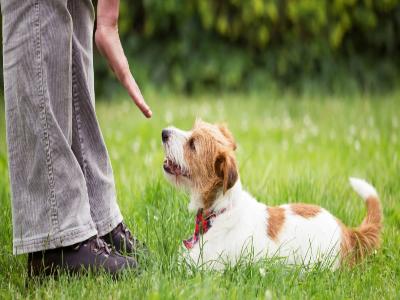
5. Build a Portfolio
Showcasing before-and-after cases shows your ability to positively transform dog behaviour. For example, include photos of a once-fearful dog now wagging its tail cheerfully after your customized training.
This visual proof displays your skills and inspires trust that you can make a real difference. Highlighting many issues displays general expertise in solving conduct problems.
Adding client reviews also builds credibility by showing communication ability and community trust.
These testimonials are like happy customers giving you gold stars for a fulfilling, patient training process. Some lines from an owner gratefully explaining how you turned their anxious dog into a happier companion showcase your caring approach.
This attracts more people looking for your outstanding service.
6. Establish a Professional Network
Becoming a member of the International Association of Canine Professionals (IACP) grants access to an engaging community of fellow dog lovers who also pursue careers and passions related to canines[1].
- Within this group, you can exchange ideas, learn new techniques, and share the collective joy of helping dogs alongside peers.
- For instance, obtaining exclusive access to member-only online forums facilitates discussions with seasoned behaviourists around the country regarding cutting-edge solutions for common dog behaviour challenges.
- Alternatively, joining the National Association of Canine Scent Work (NACSW) resembles uniting with a national team of dog welfare advocates.
- Within this extensive network, members leverage the collected wisdom of fellow canine-industry veterans to expand their own expertise, as well as contribute personal insights from their unique experiences.
- For example, striking conversations with renowned dog trainers during conferences could unveil game-changing revelations around best practices that profoundly shape an early-career professional’s path.
- These dialogues frequently ignite valuable collaborations, partnerships, or life-long friendships that substantially enrich one’s career trajectory.
The energy and ideas shared during these conferences help all members advance their capabilities and knowledge around supporting canine welfare.
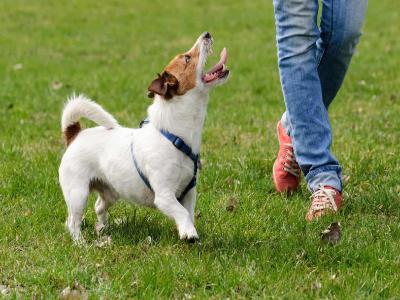
7. Start a Dog Behaviorist Business
Understanding local regulations and licensing is about ensuring you play by the book.
For example, researching and obtaining the necessary licenses to operate your business legally will give you the peace of mind to focus on what you do best, helping dogs and their owners.
Creating a website and showcasing your services online is like putting up a signboard that says, “Here’s where you find expert help for your dog.”
For instance, having a website with clear information about your services, success stories, and contact details makes it easy for potential clients to find and reach out to you.
Social media is like a megaphone that boosts your message. Utilizing platforms like Facebook or Instagram helps spread the word about your work.
Continuous Learning…
As the famous veterinarian Dr. James Herriot once said, “For all things, there is a season, and the season must be observed.”
In the same way, Dogs cannot be expected to get along together if they are unwilling.” Understanding the behaviour of a dog through continuous science-based learning allows experts to better address conflicts and behavioural issues in dogs.
Reading research articles and books is like exploring fascinating stories that scientists have uncovered about our dogs.
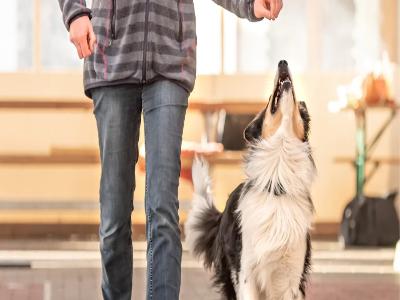
For example, you might find an article explaining how dogs express themselves through their tails, helping you understand the secret language your dogs use to express themselves. Webinars and online courses are like attending virtual classrooms where dog enthusiasts gather to learn cool tricks.
It’s like having a front-row seat to expert-led shows on your computer. Consider this: joining a webinar on dog behaviour might provide you with hands-on tips from seasoned professionals, making learning enjoyable and accessible from the comfort of your home.
Investing time routinely in these activities helps professionals master the latest discoveries to improve dog welfare.
FAQs
What Qualifications Should a Dog Behaviourist Have?
What qualifications do I need to start as a Clinical Animal Behaviourist? You will need at least a degree or other FHEC level 6 academic qualification relevant to clinical animal behaviour so that you are able to progress on to the pathway for CCAB accreditation (see further information below).
What Is the Difference Between a Dog Trainer and a Behaviourist?
Though there is some overlap based on experience and level of comfort from the professional, most trainers teach obedience, basic behaviour modifications, and specific skills whereas behaviour professionals tackle advanced behaviour issues such as fear aggression, severe anxiety, compulsive disorders, and other challenges.
Is a Dog Behaviourist Worth It?
Working with a dog behaviourist can sometimes be a great solution for behavioural problems. They can help you with puppy training, or help a new dog adjust to a new home. However, if your dog’s behavioural problems stem from a medical condition, only a licensed veterinarian can diagnose and prescribe medication.
How to Become a Dog Behaviourist?
Gain experience with animals. Learn about common problem behaviours. Study the science of behaviour modification. Pursue a certification or degree. Work with an established animal behaviourist. Get your animal behaviourist certification. Advertise your services.
Can a Behaviourist Help an Aggressive Dog?
Since there are many different types of aggression, making a diagnosis, determining the prognosis (the chances of safe and effective correction), and developing an appropriate treatment plan are usually best handled with the help of a veterinary or applied animal behaviourist.
Conclusion
In conclusion “How to Become a Dog Behaviourist?” we explored 7 detailed learning steps to become the best dog behaviourist. You can use this guide and study dog’s behaviour it is important to take care of animals as they are an important part of our lives.
This curiosity starts from a very young age and you can educate yourself deeply on this subject as you grow older. So, all the best to all the future dog behaviourists. Your learning journey begins!
Reference:
- Cpdt, S. G. M. (2023, May 1). Who are you gonna call? What to know about hiring an animal behaviourist. American Kennel Club.



